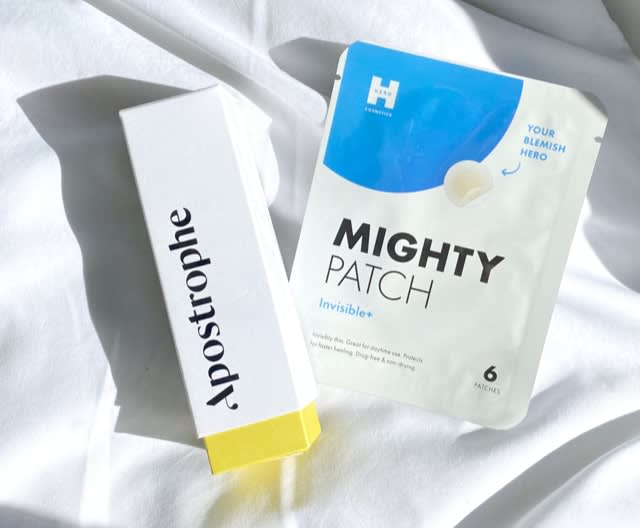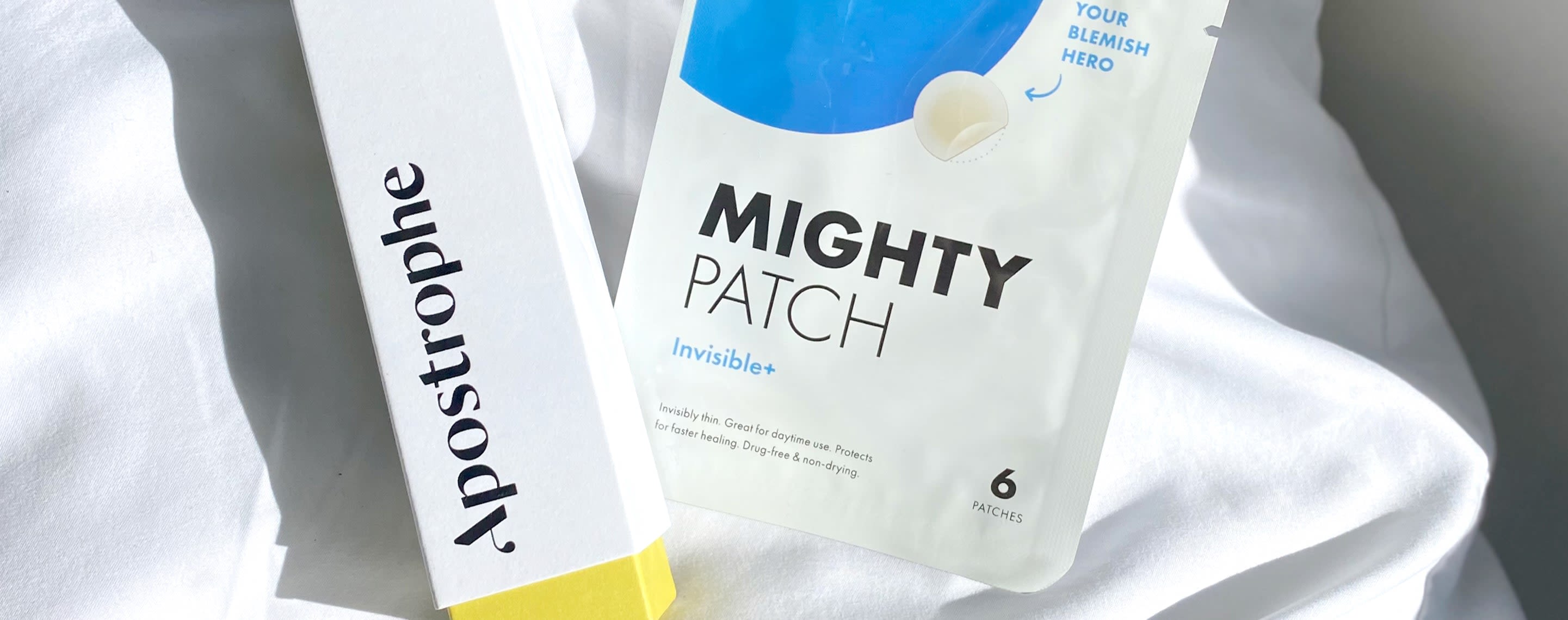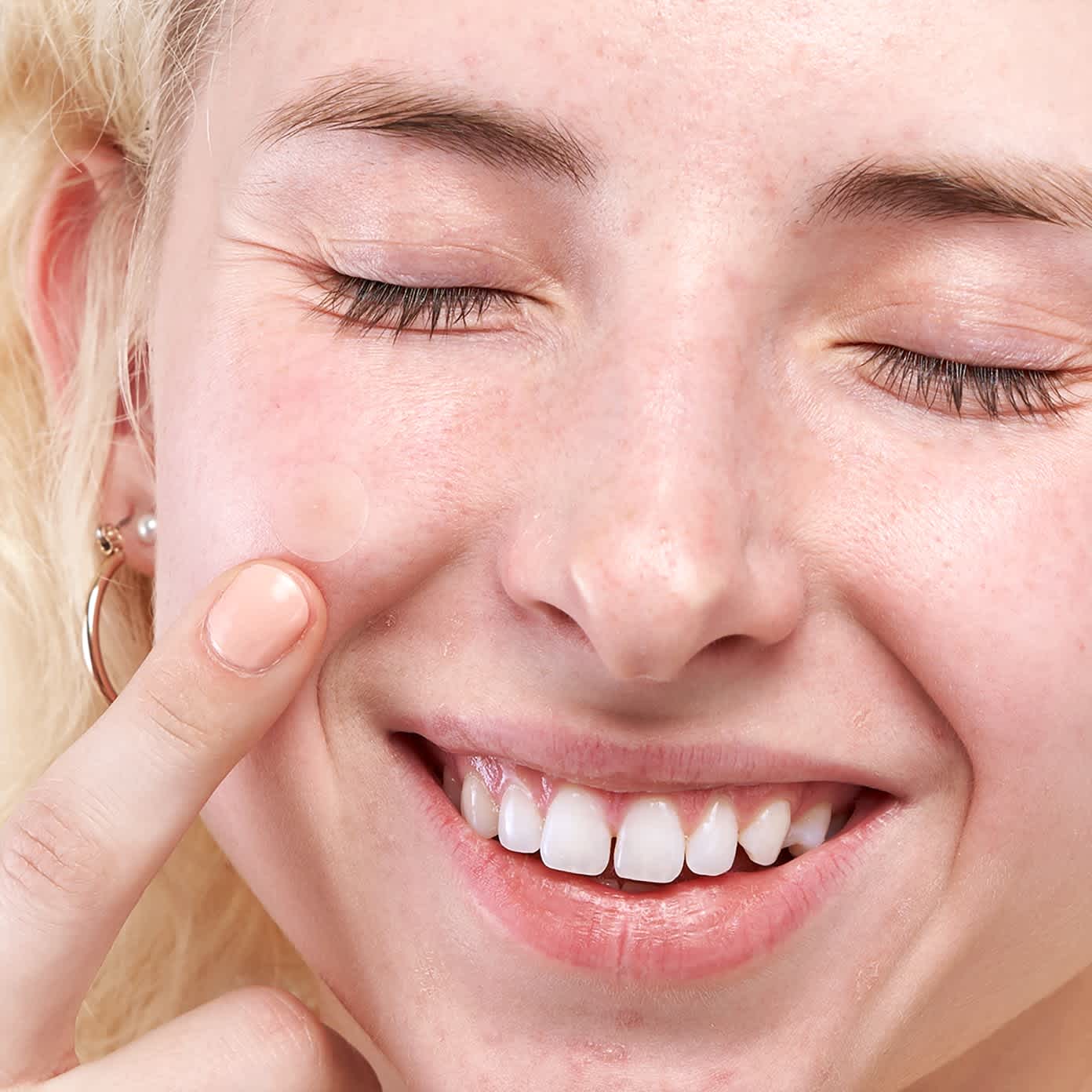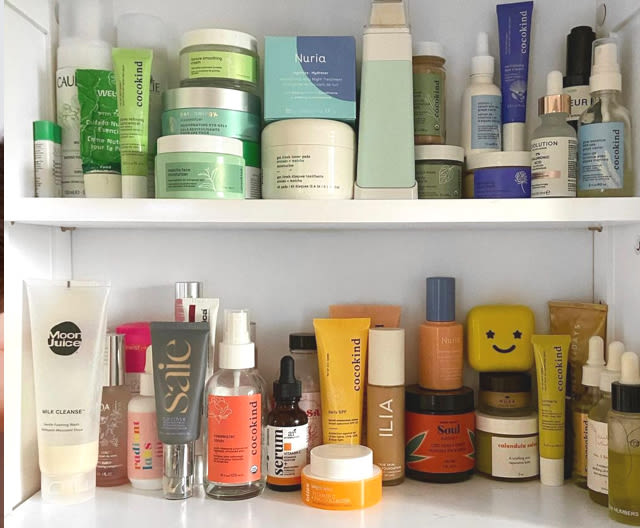Education
How To Use Hydrocolloid Patches With Prescriptions Feat. Hero Cosmetics


SHARE
Education
How To Use Hydrocolloid Patches With Prescriptions Feat. Hero Cosmetics
Medically reviewed by Aimee Paik, MD
Written by Lisa Guerrera
Last updated 8/2/2021
Our board-certified dermatologists always suggest to keep your skincare routine as simple and straightforward as possible– especially when you’re using prescription medication. But one extra skincare step that is catching derm-approval are hydrocolloid patches.
During the month of February Apostrophe is partnering with Hero Cosmetics to add their Mighty Patch Invisible+ acne patches to any topical prescription order.* We’re also serving up how-tos and other educational content on hydrocolloid patches to show how our derms recommend you use them with your prescriptions. So don’t miss out by following us on Instagram.
What is a hydrocolloid patch?
Hydrocolloid patches are traditionally made of gelling agents like pectin or gelatin that create a moist environment to draw out pus and other fluids from wounds. Typically you can find these types of bandages in your local drugstore– they usually have key words like “blister bandage” on them! While these are great for blisters, they also can work for white heads or popped pimples. In fact, there’s even a trend on tiktok about this.
But in the past decade or so these hydrocolloid materials have been identified as a good way to protect pimples that have been popped and help them on their healing journey. They became quite popular in Asia and have spread all over the world as a go to spot treatment for white heads and popped pimples!

Now you can get these hydrocolloid patches in all shapes and sizes and even ones for day-time wear like the Hero Cosmetics Mighty Patch Invisible+ (aka the patches included with your Apostrophe topical prescription order 👀) This daytime acne patch is clear, matte, and seamlessly tapered so you can protect your pimples any time!
Here’s what Dr. Aimee Paik, Apostrophe’s Medical Director, has to say about hydrocolloid acne patches:
“Hydrocolloid patches can be a great adjunctive treatment for acne. While we generally advise acne patients not to pick at their skin, there are times when a red pimple comes to a white head (what dermatologists call a “pustule”) and the contents need to be expressed for the pimple to go away. A hydrocolloid patch can be used afterwards to prevent drainage and protect the skin as it heals.”
How do you use one with your prescriptions?
Hydrocolloid patches stick best to skin that is clean and dry. But how does that fit in with your topical prescriptions? Dr. Paik recommends this order to use your hydrocolloid patches:
Step 1: Cleanse your skin with your favorite gentle cleanser.
Step 2: Pat your skin dry and apply a thin, even layer of your Apostrophe topical prescription treatment.
Step 3: Once your treatment is fully absorbed, apply your hydrocolloid patch (like from Hero Cosmetics) and you’re ready to go!
Hydrocolloid patches can also be handy to stop skin picking, an issue many folks with acne face. Dr. Paik says, “Mighty Patch can be very helpful to prevent skin picking. It can serve as a physical reminder and barrier between a pimple and itching fingers. It’s good for daytime use or under makeup. If you have a lesion you have picked, it’s great to apply Mighty Patch afterward to promote rapid wound healing.”
*Order must contain a topical prescription product and be placed between 2/1/2021 and 2/28/2021
Like what you just read? Sign up for our email list to get the scoop on skincare science delivered straight to your inbox.

General
What is milia?
What is milia? Today, we’re jumping into one type of bump that you may have heard about most commonly in infants — milia.
Read More
General
Best moisturizer for acne-prone skin
If you have combination acne-prone skin, figuring out which moisturizer is best for your skin might be tough. In this guide, we break down the best moisturizer for combination, acne-prone skin.
Read More
General
How to build a face care routine
As you get into skincare, it might seem overwhelming, especially trying to figure out the order you're supposed to apply products in. Below, we detail how to build a face care routine for your skin!
Read More